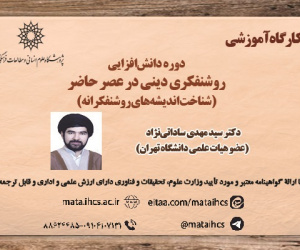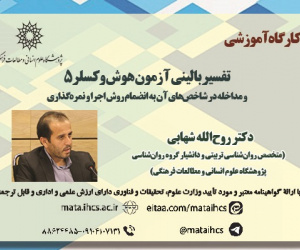ترسیم نقشه های برون دادهای علمی دانشگاه علامه طباطبائی بین سال های 1353 تا 1403 (مقاله علمی وزارت علوم)
درجه علمی: نشریه علمی (وزارت علوم)
آرشیو
چکیده
برون دادهای علمی که به گزارش یافته های پژوهش های علمی می پردازند، نقشی مهم در ارتقای دانش، پیشرفت علمی و ترویج پژوهش ها در جوامع علمی ایفا می کنند. بدین دلیل، هدف از انجام این پژوهش، تحلیل وضعیت برون دادهای علمی دانشگاه علامه طباطبائی و بازنمود آن ها در قالب نقشه های علمی بود که با استفاده از روش پژوهشی علم سنجی انجام شد. جامعه آماری این پژوهش همه برون دادهای پژوهشی (مقالات بین المللی، کتاب ها، پایان نامه ها/رساله ها، مقالات مجلات داخلی و طرح های پژوهشی) دانشگاه علامه طباطبائی بین سال های 1353 تا 1403، به تعداد 69420 عنوان بودند. این برون دادها بیشتر به زبان فارسی و انگلیسی و تعدادی نیز در دیگر زبان ها همانند فرانسوی، عربی، اسپانیایی و جز آن ها تدوین شده اند. در این پژوهش به منظور گردآوری داده های موردنیاز پژوهش از ابزارهای تحلیلی پایگاه های استنادی، گزارش های سامانه های پژوهشی دانشگاه و ابزارهای علم سنجی استفاده شد. برای ترسیم جداول از نرم افزار اکسل و برای تحلیل شاخص های مرکزیت و ترسیم نقشه های علمی از نرم افزارهای یو سی آی نت و وی. اُ.اِس. ویور استفاده شد. یافته های پژوهش نشان داد، از 3227 مقاله بررسی شده، تعداد 1091 مقاله (6/18 درصد) در حوزه علوم اجتماعی، 666 مقاله (4/11 درصد) در حوزه پزشکی و 493 مقاله (4/8 درصد) در حوزه علوم رایانه منتشر شده اند. درزمینه انتشار کتاب، دانشکده ادبیات فارسی و زبان های خارجی با 1170 کتاب در رده نخست قرار داشت. دانشکده های روانشناسی و علوم تربیتی با 835 کتاب و مدیریت و حسابداری با 656 کتاب در رده های دوم و سوم قرار گرفتند. بررسی پایان نامه ها/رساله های دانشگاه نشان داد کلیدواژه های ایران، آموزش، یادگیری، کیفیت زندگی، رشد اقتصادی، رضایت شغلی و جز آن ها بیشتر به کاررفته اند. بررسی مقالات در مجلات داخلی و خارجی فاقد نمایه بین المللی دانشگاه نشان داد، کلیدواژه های ایران، اثربخشی، دانشجویان و ارزیابی کیفیت بسامد بالایی داشتند. بیشتر طرح های پژوهشی دانشگاه علامه طباطبائی در موضوعات رضایت تحصیلی، وضعیت اشتغال، فعالیت های اجتماعی دانشجویان تدوین شده اند. درمجموع می توان بیان داشت، ترسیم نقشه های علمی می تواند در افزایش اعتبار و شفافیت نتایج پژوهش ها، توسعه و پیشرفت درزمینه پژوهشی و افزایش رؤیت پذیری برون دادهای علمی نقش بسزایی ایفا نماید.Mapping the Scientific Outputs of Allameh Tabataba'i University from 1974 to 2024
IntroductionScientific outputs that report on the findings of scientific research play a crucial role in enhancing knowledge, advancing science, and promoting research within academic communities. Therefore, the aim of this research project was to analyze the scientific outputs of Allameh Tabataba'i University and to represent them in the form of scientific maps. Research Question(s)What is the status of the university's scientific output in international citation indexes and the scientific maps of co-authorship networks, co-occurrence of terms, inter-terms, and their frequent terms?What is the status of the publication of books by researchers and faculty members of the university, and how is the scientific map of their co-occurrence of terms drawn?What is the status of the theses/dissertations of Allameh Tabataba'i University in terms of publication and subject area, and how is the scientific map of their frequent terms drawn?What is the status of the publication of articles by Allameh Tabataba'i University in internal and external systems that do not have citation indexes (not indexed), and how is their scientific map drawn?What is the status of research projects at Allameh Tabataba'i University and how is their scientific map drawn?Literature ReviewPrevious studies in the field of scientific mapping were categorized into two groups. The first group contains research that has focused on mapping scientific fields across various disciplines. Notable studies include those by Meskarpour Amiri et al. (2022); Varnaseri et al. (2022); Mohammadzadeh & Baghernejad (2023); Alipour Hafezi and Matlabi (2022); Yao et al. (2014); and Masoumi and Khajavi (2023). In the second group, studies are included that address scientific mapping in different universities. Research by Mohammadian, Esmaeili Givi, and Nahghineh (2016); VahdatZad et al. (2017); Galyani-Moghaddam and Taheri (2018); Ghasemian, Asnafi, & Erfanmanesh (2021); Soltani et al. (2022); Goftari (2024); Sandler and Gladyrev (2020); Chen and Zhang (2023) fall into this category. An examination of the research conducted has shown that in recent years, there has been an increasing interest in evaluating the scientific outputs of universities as a way to assess their performance and research impact. One of the most common criteria used for evaluating scientific outputs is the number of publications produced by a university. Additionally, studies have indicated that apart from the number of publications, other metrics such as the number of citations, journal impact factors, and H-index scores are often used to assess the scientific outputs of universities. Furthermore, in recent years, there has been significant interest in developing alternative metrics or altmetrics to evaluate scientific outputs.MethodologyThis paper was conducted using scientometrics research methods. The aim of this research was to analyze the status of the scientific outputs from Allameh Tabataba'i University and represent them in the form of scientific maps using bibliometric research methods. The statistical population of this study included all research outputs (international articles, books, theses/dissertations, domestic journal articles, and research projects) from Allameh Tabataba'i University in Persian and other languages between the years 1974 to 2024, totaling 69,420 titles. In this study, analytical tools from citation databases, reports from the university's research systems, and bibliometric tools were utilized to collect the necessary data. Data analysis was performed using descriptive statistics, social network analysis, and co-occurrence of keywords. Excel software was used to create tables, UCINET and VOSviewer softwares were employed for analyzing centrality indicators and visualizing the networks.ResultsAmong the 3,227 articles published by researchers from Allameh Tabataba'i University in the Scopus citation index, 1,091 articles, accounting for 18.6%, are in the field of social sciences; 666 articles, representing 11.4%, are in the field of medicine; 493 articles, also at 8.4%, are in the field of computer science; and 492 articles, another 8.4%, are in the fields of business, management, and accounting. The lowest number of articles are in the fields of veterinary science, with 4 articles; immunology and microbiology, with 21 articles; and chemical engineering, with 23 articles. In total, 1,105 article titles from the university have been published in the Web of Science index, of which 23 are among the highly cited articles. The most common keywords were Iran, decision-making, supply chain management, and policymaking. The subject area of statistics and probability, with 114 titles, and the subject area of artificial intelligence, with 103 titles, were identified as the most active research areas at Allameh Tabataba'i University. An investigation of the theses and dissertations from the university indicated that the keywords Iran, education, learning, quality of life, economic growth, job satisfaction, and others were frequently used. A review of over 28,000 domestic articles from the university showed that the keywords Iran, effectiveness, students, and quality evaluation were most commonly employed. Most research projects at Allameh Tabataba'i University were centered around topics such as educational satisfaction, employment status, and students' social activities.DiscussionThe findings indicate that in recent years, the number of publications from Allameh Tabataba'i University in international indexes has increased, reflecting the university's greater focus on publishing articles in international journals. However, the conducted reviews show that, in terms of citations, the articles from Allameh Tabataba'i University require more visibility, as only 23 out of the 1,105 articles published in the Web of Science index are classified as highly cited. It can be stated that Allameh Tabataba'i University has a favorable status in conducting research across various thematic areas.ConclusionOverall, it can be stated that mapping scientific outputs can lead to improvements and advancements in scientific fields, development of knowledge, enhancement of universities' credibility, facilitation and acceleration of data understanding and analysis, improvement of communication and collaboration among researchers, knowledge sharing, and increased transparency of research and its results. Undoubtedly, evaluating scientific outputs requires the participation and collaboration of all university members to be favorably integrated into the university's overarching policies. It is expected that by utilizing these tools, Allameh Tabataba'i University and other educational and research institutions can enhance their research processes and improve the quality of their research outcomes, thereby contributing to knowledge development and increasing the scientific credibility of the country. To enhance the functionality of scientific outputs, it is recommended to use specific keywords that are suitable for the thematic context of the research to clarify the subjects of the outputs.AcknowledgmentsThis research has been conducted with the support of the Research Vice-Presidency of Allameh Tabataba'i University. In this regard, the researchers express their gratitude.







